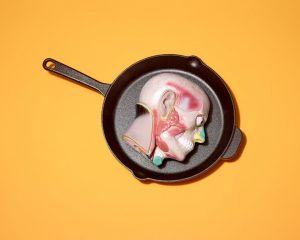John Schwartz in The New York Times:
 Are we doomed?
Are we doomed?
If you’re an expert in climate science, you probably get this question a lot.
“I do,” said Kate Marvel, associate research scientist at the NASA Goddard Institute for Space Studies. “And I’ve been hearing it more recently.” It’s no mystery why. Reports of the threats from a warming planethave been coming fast and furiously. The latest: a startling analysis from the Intergovernmental Panel on Climate Change predicting terrible food shortages, wildfires and a massive die-off of coral reefs as soon as 2040, unless governments take strong action. The Paris climate accord set a goal of keeping the global temperature from rising more than 2 degrees Celsius, or 3.6 degrees Fahrenheit, above preindustrial levels. At 2 degrees, things are bad enough: Arctic sea ice is 10 times more likely to disappear over the summer, along with most of the world’s coral reefs. As much as 37 percent of the world’s population becomes exposed to extreme heat waves, with an estimated 411 million people subject to severe urban drought and 80 million people to flooding from rising sea levels.
But if we can hold the global temperature increase to 1.5 degrees Celsius, Arctic sea ice is far likelier to survive the summers. Coral reefs will continue to be damaged, but will not be wiped out. The percentage of people exposed to severe heat waves would plummet to about 14 percent. The number exposed to urban drought would drop by more than 60 million people. Still, no major industrialized nation is on track to meet the 2-degree goal, much less the 1.5-degree mark. And the Earth has already warmed by 1 degree. Even if, through huge effort and force of will, we cut our greenhouse gas emissions greatly, the effects of today’s carbon dioxide in the atmosphere will be felt for centuries to come.
While that is undoubtedly grim, it’s not as bad as it could be. Reducing the amount of greenhouse gases in the atmosphere could eventually reverse some of the most troublesome effects of warming.
More here.
